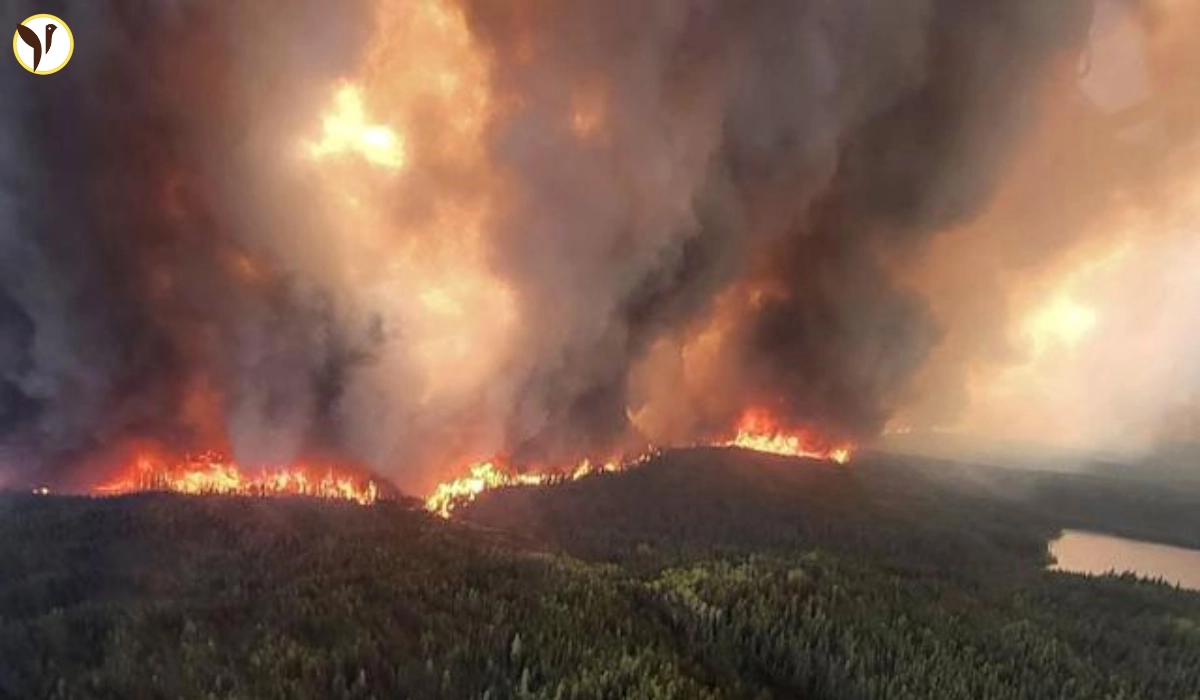Wildfire Disaster in Canada Becomes a Continental Emergency
The wildfire disaster sweeping throughout Canada in 2025 has advanced right into a complete-scale environmental and fitness emergency, gripping not only most of the U.S.A. itself but big swathes of the united states as well. With over two hundred lively wildfires burning—a lot of them categorized as "out of control"—the size of destruction is marvelous. The provinces of Manitoba, Saskatchewan, and Alberta are a few of the hardest hit, with some areas recording their worst wildfire seasons ever. In Manitoba on my own, this yr’s fires have already damaged historical information in terms of carbon emissions, surpassing previous tiers via several megatons. What makes the situation even more alarming is the speedy and always-accomplishing movement of smoke. It has traveled thousands of miles, now not only affecting Canadian cities but drifting deep into the U.S. Midwest and past, impacting air quality in important metropolitan areas and even attaining components of Russia, Greenland, and the Arctic.
Cities Shrouded in Smoke and Health Hazards
The thick, grayish plumes that now fill the skies over cities like Chicago and Detroit have turned brilliant sunny days into a perpetual haze. these city centers have recorded some of the worst air quality levels globally, with Air Quality Index (AQI) rankings hovering in ranges deemed risky to health.
-
The smoke carries great particulate matter, remember, called PM2. five, microscopic pollution that penetrates deep into the lungs and bloodstream.
-
The effects are immediate and excessive—burning eyes, angry throats, chronic coughing.
But the long-term risks are far more insidious. medical experts are sounding the alarm over the risks of endured publicity, in particular for inclined agencies which include:
-
Kids
-
The elderly
-
People with pre-present fitness situations like allergies or coronary heart ailments
Research has related sustained publicity to wildfire smoke with expanded risks of:
-
Coronary heart attacks
-
Strokes
-
Cognitive decline
-
Premature loss of life
See Full Coverage here:
Environmental and Economic Fallout Deepens
Past the direct fitness influences, the financial and environmental toll is just as extreme. Firefighting resources are stretched thin, with personnel running around the clock to contain blazes that flare unpredictably because of dry situations, excessive winds, and the accumulation of flammable woodland material.
-
Houses, infrastructure, and wildlife habitats are being misplaced at an alarming price.
-
Entire towns have faced evacuations
-
Schools have closed
-
Flights have been disrupted
-
Outdoor events canceled
Authorities urge people to stay inside and avoid physical exertion. In rural areas, farmers and indigenous populations are also grappling with the destruction of land and herbal sources, which can be crucial to their manner of lifestyles.
Climate Change: The Root of Escalating Fire Threat
All of this is going on in opposition to the backdrop of weather exchange, which scientists widely agree is a chief driver of the escalating frequency and intensity of wildfires.
-
Rising worldwide temperatures
-
Transferring precipitation styles
-
Longer drought durations
These factors are creating perfect conditions for fires to ignite and spread swiftly. at the same time as wildfires are a natural part of a few ecosystems, helping to clean vintage growth and return nutrients to the soil, the scale at which they’re now happening has shifted them from being regenerative forces to unfavorable phenomena.
This increases severe issues approximately
-
The long-term period sustainability of forests
-
The safety of communities in excessive-hazard zones
-
The ability of emergency services to reply effectively yr after yr
Urgent Need for Action and Long-Term Planning
As smoke keeps lingering in the air and new fires ignite almost every day, public health officials and environmental scientists alike are calling for a greater coordinated reaction. immediately focus consciousness on:
-
Shielding public health via warnings
-
Advisories
-
Distribution of protective gear such as N95 mask
However, the broader communication is transferring toward long-time-period solutions:
-
Enhancing forest control practices
-
Investing in early detection structures
-
Creating weather-resilient infrastructure
-
Reducing greenhouse gas emissions to reduce the foundation reasons of this crisis
The 2025 wildfire season is proving to be a sobering one. It’s not just about setting out fires anymore—it’s about getting ready for a destiny where such intense events are not the exception, but the new norm.









